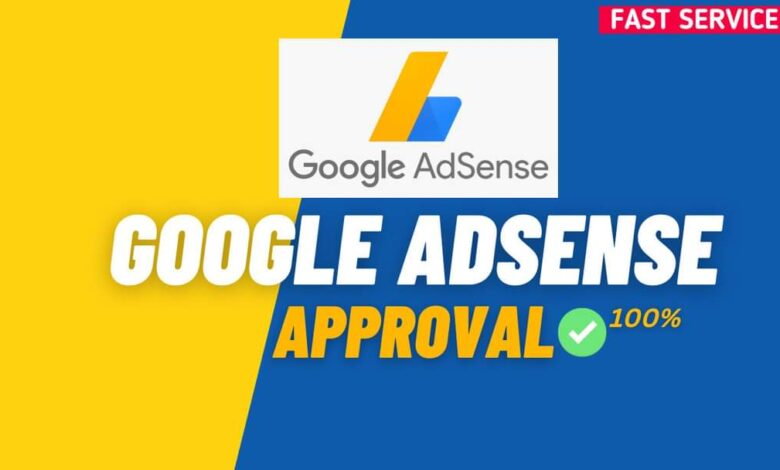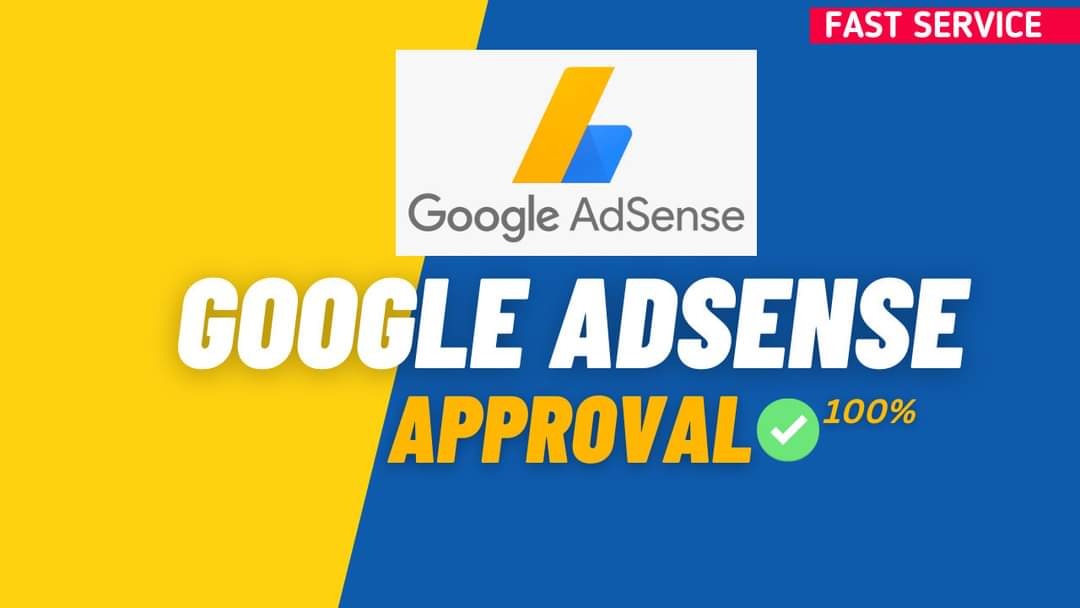Navigating the New Google AdSense Policies and Guidelines for 2024
What Are The Google Adsense Policies and Guidelines for 2024

Navigating the New Google AdSense Policies and Guidelines for 2024
Introduction
In the ever-evolving landscape of online advertising, Google AdSense remains a prominent player, helping publishers monetize their websites and content effectively. However, Google continually refines its policies and guidelines to ensure a safe and valuable experience for users, advertisers, and publishers. As we step into 2024, it’s crucial for website owners and content creators to stay updated with the latest changes in AdSense policies. In this blog post, we will walk you through the new Google AdSense policies and guidelines for 2024.

- User Experience Takes Center Stage
Google has always emphasized user experience, and in 2024, this focus remains strong. AdSense policies are designed to ensure that ads do not negatively impact the quality of your content or the experience of your visitors. Here are some key points to consider:
- Intrusive Ads: Avoid placing ads in a way that disrupts user navigation or creates confusion. Pop-up ads, auto-playing video ads with sound, and excessive interstitials are discouraged.
- Ad Density: Google encourages publishers to maintain a balance between content and ads. Ensure your content remains the primary focus of your website.
- Mobile Friendliness: With the growing importance of mobile devices, it’s crucial that your website and ads are mobile-friendly. Non-mobile optimized sites may see a decline in rankings.
- Content Quality and Originality
In 2024, Google continues to emphasize the importance of high-quality, original content. AdSense policies expect publishers to provide valuable content to their audience. Here’s what you should keep in mind:
- Plagiarism: Avoid using copyrighted material without proper authorization. Make sure all your content is original or properly attributed.
- Hate Speech and Controversial Content: Google is stringent when it comes to content that promotes hate speech, violence, or discrimination. Avoid such content to comply with AdSense guidelines.
- Ad Placement and Ad Formats
Ad placement is a crucial aspect of AdSense policies. While ads are a source of revenue, they should be placed thoughtfully to enhance the user experience:
- Above-the-Fold: Google now recommends placing ads within the user’s viewable area (above the fold) for the best results.
- Ad Formats: Experiment with different ad formats, such as responsive ads, display ads, and matched content, to find what works best for your site and audience.
- Privacy and Data Collection
Data privacy is a hot topic in 2024. Google expects publishers to be transparent about data collection and usage:
- Privacy Policy: Ensure you have a clear and comprehensive privacy policy that outlines how user data is collected and used on your website.
- Consent: If your site uses cookies or collects user data, make sure you obtain proper consent from your visitors in compliance with applicable privacy regulations.
- Ad Content and Relevance
To maintain a high-quality user experience, it’s important that the ads displayed on your site are relevant and non-deceptive:
- Ad Content: Google prohibits ads that deceive users or promote illegal activities. Ensure the ads on your site are legitimate and relevant to your content.
- Ad Review: Regularly review the ads shown on your website to ensure they align with your content and do not violate AdSense policies.

User Experience Takes Center Stage: A Crucial Element for SEO Success
In the ever-evolving world of SEO, one thing remains constant: the paramount importance of user experience (UX). User experience takes center stage not only because it enhances the satisfaction of your website visitors but also because search engines, like Google, use it as a significant ranking factor. In this blog post, we will explore why user experience is crucial for SEO success and provide practical tips to optimize your website accordingly.
The Significance of User Experience in SEO
- Bounce Rate MattersHigh bounce rates, where visitors quickly leave your site after arriving, send a signal to search engines that your content may not be relevant or engaging. This can negatively impact your search rankings. A positive user experience can help lower your bounce rate, indicating to search engines that your content is valuable to users.
- Dwell Time Impacts RankingsDwell time refers to the amount of time users spend on your website after clicking on a search result. If users quickly return to the search results page, it suggests that they didn’t find what they were looking for on your site. Optimizing your site for a better user experience can increase dwell time, which can positively influence your rankings.
- Mobile-Friendliness MattersWith the increasing use of mobile devices, Google prioritizes mobile-friendly websites. If your site isn’t mobile-responsive and doesn’t provide a good experience for mobile users, you may see a decline in your search rankings.
Practical Tips for Enhancing User Experience
- Page Speed OptimizationSlow-loading pages frustrate users and can lead to high bounce rates. Ensure your website loads quickly by optimizing images, using browser caching, and minimizing unnecessary scripts.
- Mobile ResponsivenessMake sure your website is responsive to different screen sizes and devices. Google’s mobile-first indexing means that your mobile site’s content and UX will be considered for rankings across all devices.
- Intuitive NavigationSimplify your website’s navigation by organizing content logically and using clear menus. Users should easily find what they’re looking for without having to click through numerous pages.
- Quality ContentProvide valuable, informative, and engaging content that answers users’ questions and addresses their needs. Well-researched and well-written content not only keeps users engaged but also builds trust and authority.
- Visual AppealUse visually appealing design elements, such as images, videos, and graphics, to enhance the overall aesthetics of your website. A visually attractive site can keep users engaged and encourage them to explore further.
- Mobile-Friendly DesignOptimize your website for mobile devices. Use responsive design techniques, ensure readable text and clickable elements, and avoid intrusive pop-ups that can negatively affect mobile users’ experience.
- A/B TestingContinuously monitor and improve user experience through A/B testing. Experiment with different layouts, designs, and content to see what resonates best with your audience.
Content Quality and Originality: The Cornerstones of SEO Success
In the ever-evolving landscape of search engine optimization (SEO), two factors remain constant: the paramount importance of content quality and originality. High-quality, original content not only attracts and engages your target audience but also plays a pivotal role in search engine rankings. In this blog post, we will explore why content quality and originality are crucial for SEO success and provide practical tips for creating outstanding content that ranks well and resonates with your readers.
The Significance of Content Quality and Originality in SEO
- Engagement and User SatisfactionHigh-quality content that provides value, answers questions, and addresses users’ needs leads to longer page visits and lower bounce rates. This indicates to search engines that your content is relevant and engaging, which can positively impact your rankings.
- Link Building OpportunitiesOriginal, informative content naturally attracts backlinks from other websites. Quality backlinks are a significant ranking factor, and creating valuable content is one of the most effective ways to earn them.
- Authority and TrustworthinessConsistently producing high-quality, original content establishes your website as an authority in your niche. Search engines favor authoritative websites, which can result in higher rankings and more visibility in search results.
- Avoiding Duplicate Content PenaltiesDuplicate or plagiarized content can lead to penalties from search engines, potentially harming your rankings. Creating original content is a surefire way to avoid such penalties.
Practical Tips for Creating High-Quality and Original Content
- Thorough ResearchBefore creating content, conduct in-depth research to understand your target audience’s needs and pain points. Use keyword research tools to identify relevant keywords that users are searching for in your niche.
- Unique PerspectiveProvide a unique perspective or angle on a topic. Avoid regurgitating information that is readily available elsewhere. Offer fresh insights, examples, or case studies that set your content apart.
- Valuable and InformativeEnsure that your content offers genuine value to readers. Answer questions, solve problems, and provide actionable takeaways. The more valuable your content, the more likely it is to be shared and linked to by others.
- Well-Structured ContentUse a clear and organized structure for your content. Headings, subheadings, bullet points, and numbered lists make your content easier to read and understand.
- Proper Citations and AttributionWhen referencing or quoting external sources, always provide proper citations and attribution. This not only demonstrates your credibility but also avoids plagiarism issues.
- Edit and ProofreadProofread your content carefully to eliminate grammar and spelling errors. Well-edited content reflects professionalism and boosts user trust.
- Visual ContentIncorporate visual elements like images, infographics, and videos to enhance your content’s engagement and clarity.
- Regular UpdatesKeep your content up-to-date to maintain its relevance and accuracy. Outdated information can harm your SEO efforts.

Optimizing Ad Placement and Ad Formats for SEO Success
In the dynamic world of search engine optimization (SEO), where every click and impression count, optimizing ad placement and ad formats can make a significant difference. Balancing revenue generation through ads with a seamless user experience is a crucial art for website owners and content creators. In this blog post, we’ll delve into the vital aspects of ad placement and ad formats that can positively impact your SEO strategy.
The Significance of Ad Placement in SEO
- Above-the-Fold PlacementGoogle’s guidelines recommend placing ads above the fold, which means they should be visible without scrolling down the page. This ensures that users see ads immediately upon landing on your page, potentially increasing ad revenue and engagement.
- Balancing Content and AdsStriking the right balance between content and ads is essential. Overloading your pages with too many ads can hurt your SEO efforts by making your site appear spammy and negatively affecting the user experience.
- Interstitials and Pop-UpsExcessive use of interstitials and pop-up ads can lead to higher bounce rates and may result in penalties from search engines. Use them sparingly and ensure they don’t disrupt the user’s ability to access your content.
Optimizing Ad Formats for SEO
- Responsive AdsResponsive ad formats adapt to different screen sizes and devices, enhancing the user experience. Google favors mobile-friendly websites, so using responsive ads can positively impact your SEO rankings.
- Display AdsDisplay ads, when placed strategically and unobtrusively, can add value to your website without compromising user experience. Ensure they complement your content rather than overshadow it.
- Matched ContentGoogle’s Matched Content feature provides users with personalized recommendations for articles on your site. Implementing this can increase user engagement and time spent on your website, which can indirectly benefit your SEO efforts.
Practical Tips for Effective Ad Placement
- Test and MonitorExperiment with different ad placements and monitor their performance. Tools like Google AdSense offer insights into ad click-through rates, helping you find the most effective placements.
- User-Friendly NavigationEnsure that your ads do not hinder user navigation. Users should easily find their way around your website without being confused or distracted by ads.
- Content RelevanceAlign your ad content with the theme and topic of your website. Irrelevant ads can deter users and harm your SEO rankings.
- Page Load SpeedAds can impact page load times. Optimize your website’s speed to ensure that ads do not significantly slow down your pages, as slow-loading pages can negatively affect SEO.
- Ad BlockersConsider the use of ad blockers by your audience. Some users may block ads, so it’s essential to find a balance between ad revenue and ad-free user experiences.

#PoliciesandGuidelinesfor2024,#googleadsensepolicies,#googleadsenseGuidelinesfor2024,#googlenewspolicies,Usaadsensepolicies,#Chainaadsensepolicies,#nigeriaadsensepolicies,franceradsensepolicies,Canadaadsensepolicies
Conclusion
Google AdSense policies and guidelines for 2024 continue to prioritize user experience, content quality, and data privacy. Staying compliant with these policies is essential for maintaining a successful monetization strategy and ensuring a positive experience for your audience. Regularly review the AdSense policies and make necessary adjustments to your website to ensure that you continue to benefit from this advertising platform while providing value to your visitors.







